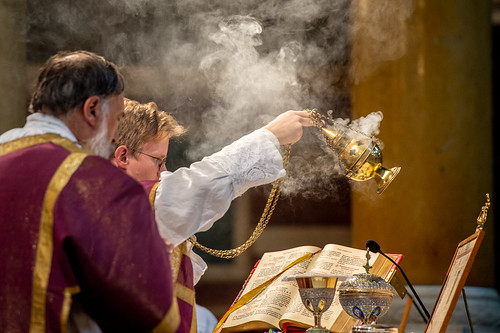 |
| Fr Henry Whisenant insensese the Altar in Westminster Cathedral: Annual Mass for the Latin Mass Society |
From an early date, the Church in the West has used Latin—not only for administration, study, and communication, but for prayer. This was natural for regions where Latin was the majority language, but as the centuries passed, the Western Church persisted with a Latin liturgy in evangelizing peoples on and beyond the edges of the Roman Empire not conversant with it, such as the North African speakers of Punic and the speakers of Celtic and Germanic languages in western and central Europe. By contrast, the Eastern Churches sometimes made use of the languages of their new converts, even when these had to be specially developed in their written forms for this to be possible, as with Ethiopia’s Ge’ez and Russia’s Church Slavonic.
There is thus a close association between the Western Church and the Latin language. Even today, when the liturgy can be celebrated in a huge range of languages, this relationship has left its mark, and Latin remains an option for both public and private prayer—not only in celebrations of the pre-Vatican II liturgy, but also for the reformed Mass.
Why has the Church been so attached to Latin? The answer is that liturgical Latin is not just a convenient language, but a sacred language.
No comments:
Post a Comment